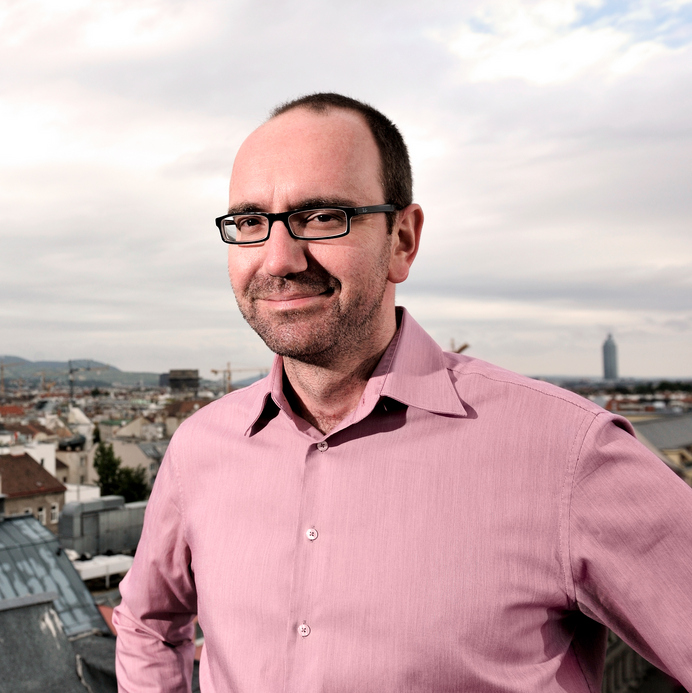One of the main criteria for preparing a nomination for the European Capital of Culture of a city is a strong European context of the project and cooperation with European experts, artists and institutions in Europe. Therefore, our Project Team has paid special attention to this segment of the nomination, and one of the cities with which we encourage the cultural exchange is Pecs. This former Capital of Culture and the twin city of Novi Sad is a great example of transformation and sustainable development of the city, which has solved some of the fundamental problems of the city’s cultural scene through the project. We talked to Mr.Marton Méhes about the candidacy of Pécs, cooperation with Novi Sad and project activities of the Team Pecs 2010.
1. Mr. Méhes, you were the Artistic Director of the Project Pécs 2010. Can you please tell us more about the Candidacy and Artistic concept of the Project?
When Pécs applied for the ECoC-title, the European discourse was focusing very much on urban development on a cultural basis. This meant that cities invested a lot into the cultural infrastructure and into the revitalization of former industrial halls or areas. This was also the starting point for Pécs, being a 2000 year old historical town with a rich cultural heritage but also with perhaps the strongest contemporary scene of Hungary after Budapest, but without a cultural infrastructure. This had to be changed – integrating a very special industrial area: the old Zsolnay Ceramic Manufacture, which became the Zsolnay Cultural Quarter, today a unique mixture of industrial heritage, arts, design, education, family entertainment, festivals and gastronomy.
From a completely other perspective, the Pécs-candidacy tried to redefine the city’s position and role in the region: It was looking for closer cultural cooperations with comparable mid-size “Central European-type” cities in many countries from Triest to Sibiu – among them with Novi Sad. It is not by chance that Novi Sad and Pécs became official partner cities during the ECoC-preparatory period, in 2009!
An important goal of the artistic concept was to bring together the local and the European level. Let me mention two concrete examples: Only a few people knew that Pécs had a significant contribution to the Bauhaus movement. Several famous Bauhaus-artists came from here like Marcel Breuer. In a huge and complex international exhibition project the role of Hungarian (and Pécs) artists in the European (and worldwide) Bauhaus could be presented – after Pécs also in the Bauhaus Archive in Berlin.
Another approach to the local-European-bridging was to invite European solo stars to play together in a concert with the city’s Pannon Philharmonic Orchestra. This was good for the public, but also for the reputation of the orchestra! In return, the Pécs musicians went on tour into other European Capitals of Culture, and served as a cultural ambassador of Pécs.
2. How long the process of preparation of Pécs Candidacy for ECoC lasted and what were the main problems and challenges you have encountered during the preparation?
Pécs was selected for the title in October 2005, but the concrete preparations started in November 2006. You have to know that in Pécs five big infrastructural projects had to be realized until 2010 (among them a new Concert Hall and the revitalization of the Zsolnay Ceramic Manufacture area); a package of 115 million euros – mainly financed by EU-fonds. Therefore the biggest challenge was, that citizens, the media and the politicians had been focusing rather on the infrastructural projects than the cultural content. The main question was, whether the buildings will be completed by 2010…
Nevertheless, there were four thematic years from 2006 to 2009 like the year of cultural heritage, the year of green environment or the year of religions. They all were connected to relevant anniversaries or special events in the city, like the opening of the UNESCO World Heritage site in 2006 (Early Christian Cemetery), or the 1000th anniversary of the Episcopal of Pécs in 2009. I think that we could manage to start some sustainable programmes during the preparatory period like the international Pécs Writers Programme – a residency project – which is still running since then!
3. Can you make a brief comparison between Pécs before and after the project of the European Capital of Culture?
This is the main point! In 2009 some 80% oft he citizens were rather sceptical towards the success oft he Pécs ECoC programme. In 2011 more than 80% believed that it was worth it! I would like to stress two very important facts: 1) Today – and since 2010 – Pécs is well marked on the cultural and touristic map of Europe. 2) The citizens and the artists are delighted by the new cultural infrastructure like the Kodály Centre (concert and conference hall). It is one of the concert halls in Europe with the best acoustics. Stars from everywhere in the world are playing there month by month – in front of a full house.
4. You have great expirience of working for project of the European Capital of Culture. What is in your opinion the most important criterion that City must fulfill in order to become the Capital of Culture ?
I don’t think that we can reduce this to only one criterion. I do believe that the criteria of the ECoC-application – like a unique artistic concept, the European dimension, the long-term cultural strategy or the management capacity – are all really relevant and essential. The question is rather whether the city has credible answers to or ideas for these criteria, which also means that on certain points politics, the artistic scene, institutions and citizens have to be ready and able to change themselves. The candidacy has to show what I learnt from my friend Ulrich Fuchs (Linz 2009, Marseille-Provençe 2013): The ECoC title is not a decoration but rather a grant. The city has to make the best of it!
5. In past few years, in several occasions you have expressed your optimism regarding the Novi Sad’s chances to become ECoC. On which grounds you base your optimism?
I’m still convinced that Novi Sad has the potential of an ECoC! Novi Sad is a European place: A huge multiethnic, mulicultural and multireligious history in the background, and a European perspective for the future. Novi Sad even showed the world that bridges destroyed during the war can be reconstructed in a couple of years. This is of course also a very strong symbolic momentum, just like another fact that Novi Sad is right on half a way at the Danube between the Black Forest and the Black Sea… The city is a child of Mama Dunav/Duna/Donau…
On the other hand I can see the willingness to chance structures and to develop new contents. And there are a lot of stories and exciting issues Novi Sad has to tell or discuss with Europe, since in many relations, the city’s experiences and future plans are relevant for many other municipalities throughout the Danube region and Europe!



